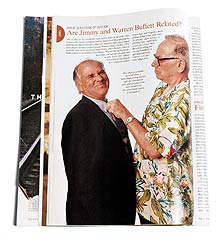In case my readers were not aware, the Spring 2007 issue of the Journal of Genetic Genealogy is now available. This free, open-access peer-reviewed journal has been around in the Spring of 2005 and offers recent news and analysis in the field of genetic genealogy. The current issue has the following articles:
A Funny Thing Happened on the Way to Retirement, By T. Whit Athey, editor
Discussion of recent developments in the field as well as nomenclature issues.
Stacking the Deck: Mutation Rate in the mtDNA Coding Region, By Ann Turner
According to the article, “Genetic genealogists, who are obtaining full-sequence mtDNA tests in increasing numbers, are in a position to provide a “biased sample†for the study of the mutation rate in the coding region.”

 Speaking of the
Speaking of the